Magma rising at Great Sitkin volcano, Alaska
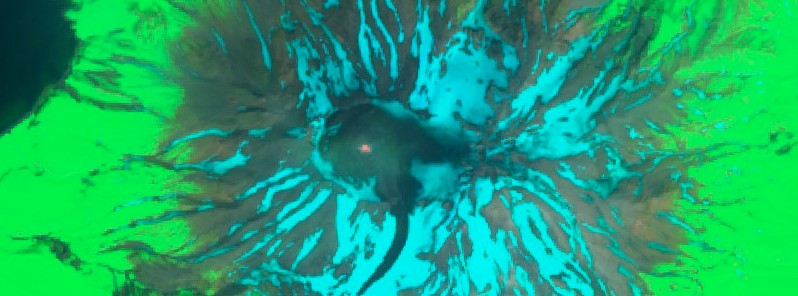
A lava dome-like feature formed in the summit crater of Great Sitkin volcano, Alaska, suggesting magma is rising near the surface. As a result, the Alaska Volcano Observatory (AVO) has raised the Aviation Color Code to ORANGE and the Volcano Alert Level to WATCH.
A satellite radar image captured at 05:32 UTC on July 23, 2021, shows a small approximately 50 m (150 feet) diameter area of uplift in the center of the crater at Great Sitkin.
Seismicity has been at relatively low levels this week compared to last week, making AVO suggest that the lava dome-like feature was emplaced last week.
Moderately elevated surface temperatures consistent with this feature were observed in satellite data on July 22. Unfortunately, cloudy conditions have obscured views of the volcano by satellite most of the past week.
AVO said it will continue to closely monitor this new uplift feature, adding that the prognosis for eruptive activity is uncertain.
"Continued growth of the lava dome feature, additional explosive events, or a return to non-eruptive behaviors are all possible."
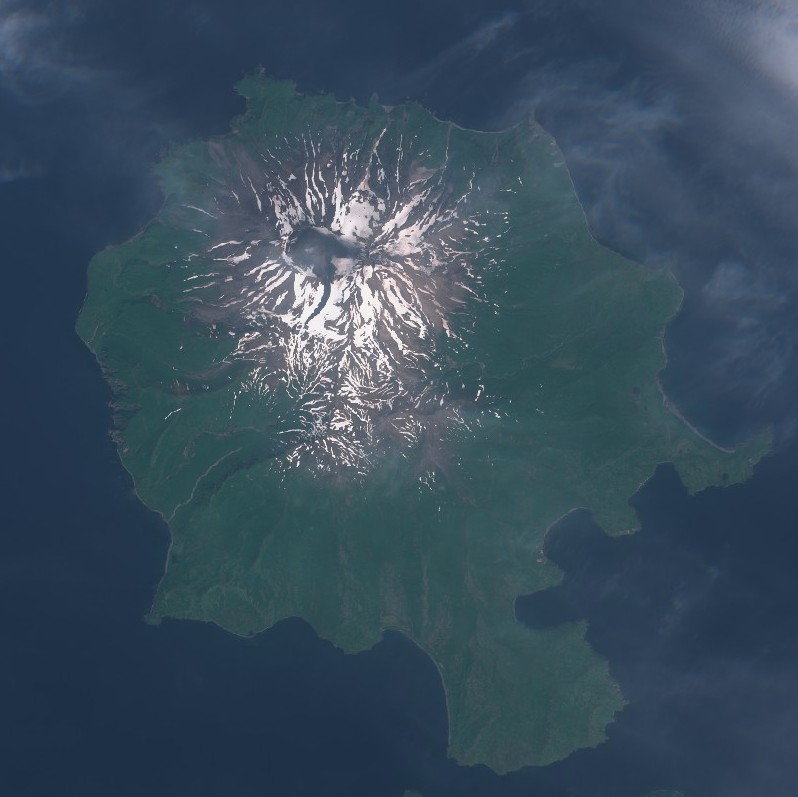
Great Sitkin volcano on July 22, 2021. Credit: Copernicus EU/Sentinel2 (Natural Color), TW
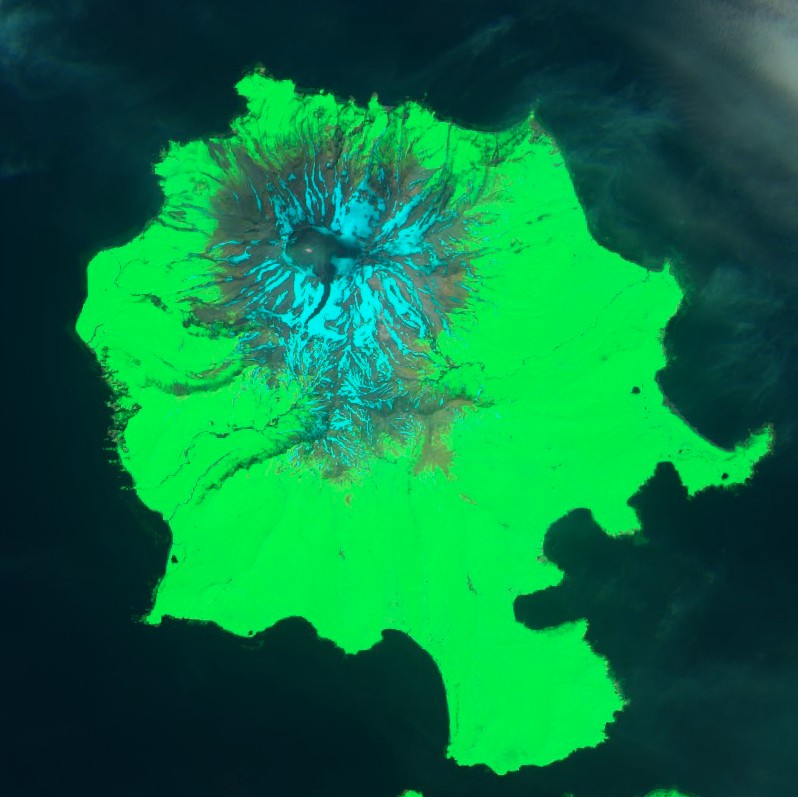
Great Sitkin volcano on July 22, 2021. Credit: Copernicus EU/Sentinel2 (SWIR), TW
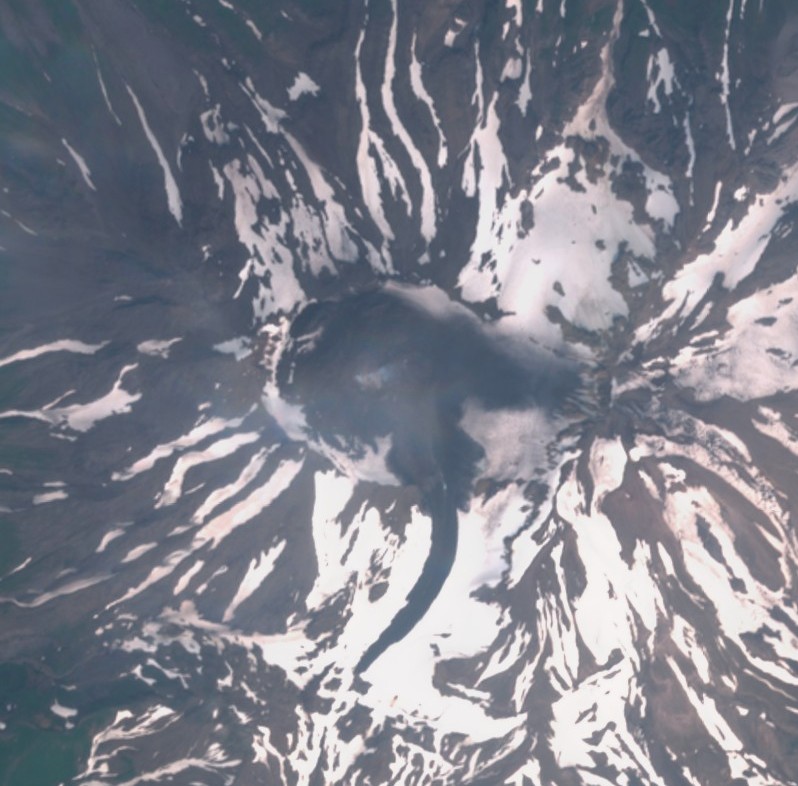
Great Sitkin volcano on July 22, 2021. Credit: Copernicus EU/Sentinel2 (Natural Color), TW
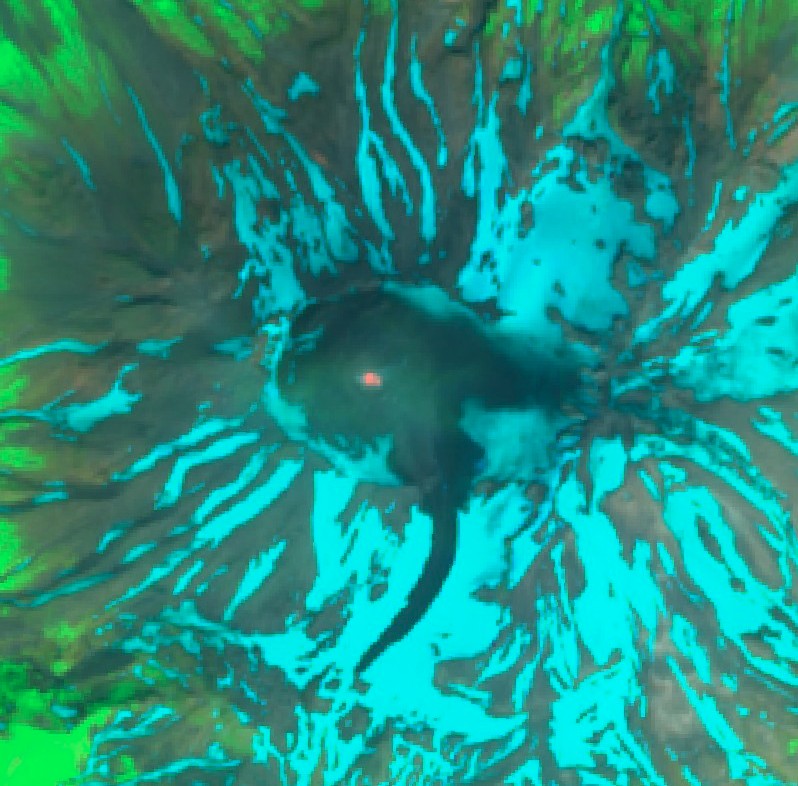
Great Sitkin volcano on July 22, 2021. Credit: Copernicus EU/Sentinel2 (SWIR), TW
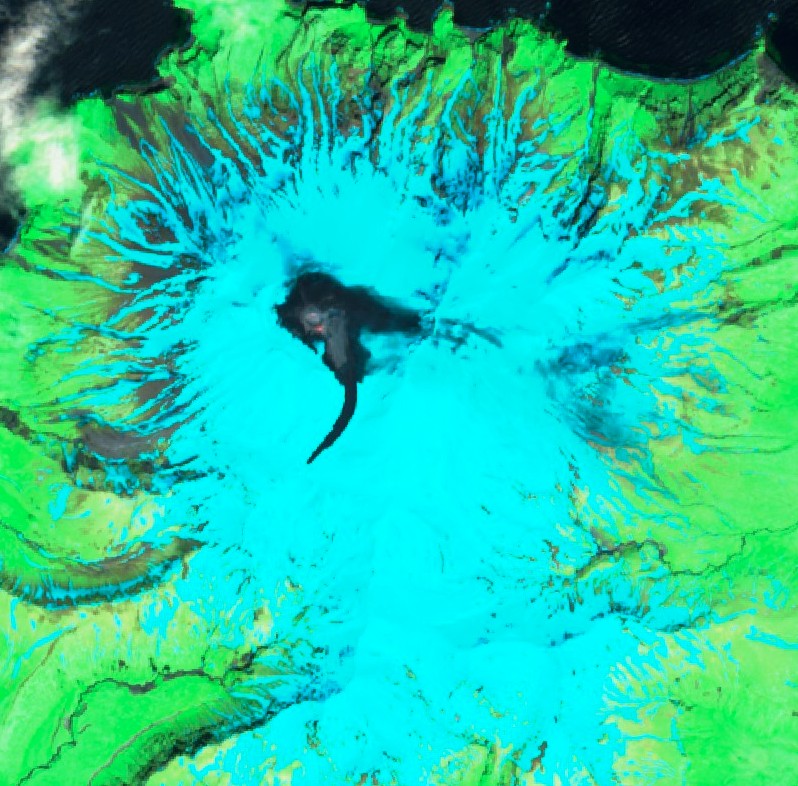
Great Sitkin volcano on June 5, 2021. Credit: Copernicus EU/Sentinel2 (SWIR), TW
The first significant explosion at Great Sitkin since 1974 took place on May 26, 2021. The resulting ash cloud rose up to 4.5 km (15 000 feet) above sea level and drifted east.
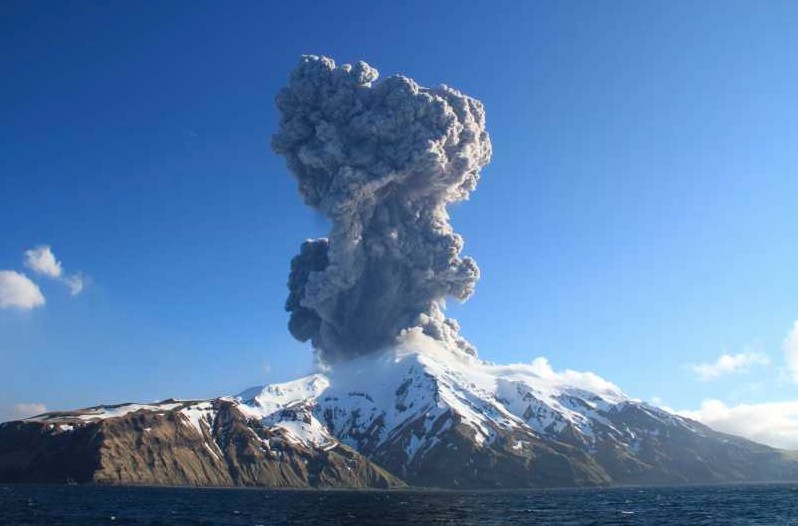
Image credit: Lauren Flynn, USFWS
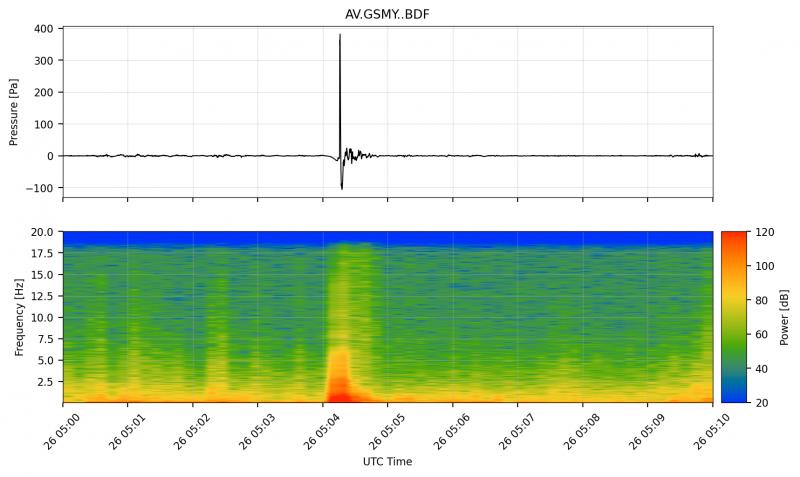

Infrasound signal from the eruption of Great Sitkin on May 26, 2021. The top plot is the infrasound (low-frequency sound) wave recorded on station GSMY, roughly 6 km (3.7 miles) from the vent. The eruption produced a single, loud blast at around 05:04 UTC. The bottom plot is the spectrogram, showing the frequency content of the infrasound over time. Credit: AVO/UAF-GI, David Fee
"It had a very loud, audible and low-frequency sound to it. I guess a good analogy would be if you shake up a bottle and then you pop the cork and get an explosion out the top. That’s kind of what happened here." said David Fee, a coordinating scientist at AVO.
"We haven’t seen an eruption like this from Great Sitkin at least as long as I’ve been around here," Fee said. "So it could quiet down or we could expect continued activity. We’ll just have to wait and see."
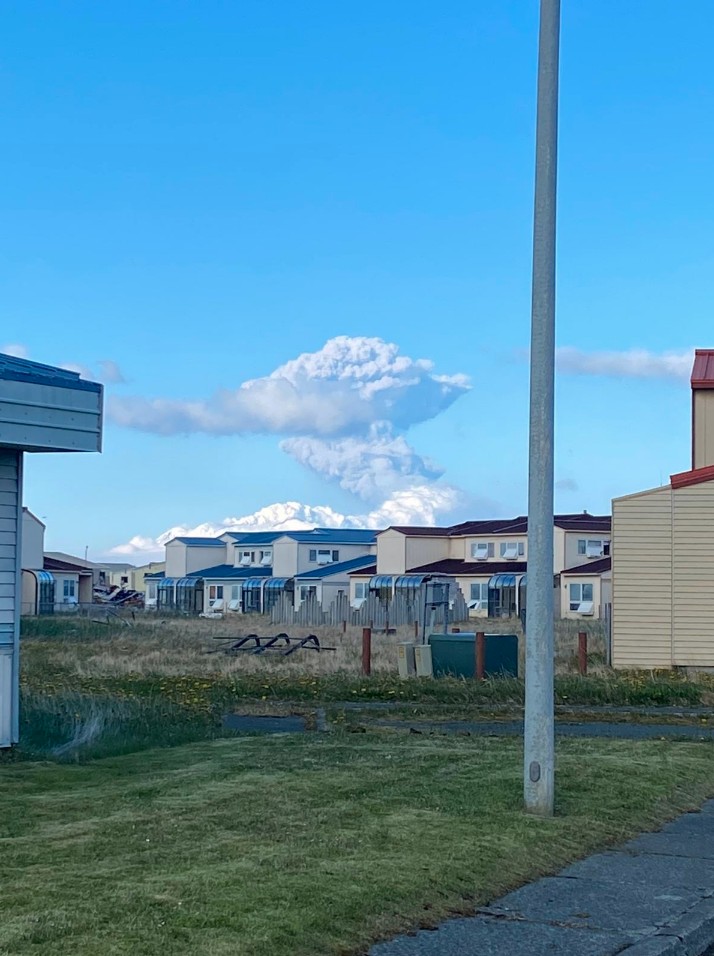

Image credit: Tyler Ellis
AVO started detecting an increase in local earthquake activity on May 24, indicating an increased potential for eruptive activity and prompting the observatory to raise the Aviation Color Code to Orange and the Volcano Alert Level to Watch.
Elevated surface temperatures and sulfur dioxide emissions were observed in satellite data a weak before the eruption. Robust steaming was observed by AVO field crews on Adak Island.
Elevated surface temperatures have been observed in satellite images beginning in January 2021 and detections have increased over the past two months.
Satellite detections of increased volcanic gas emissions have been observed beginning on May 10.
Geological summary
Great Sitkin forms much of the northern side of Great Sitkin Island. A younger parasitic volcano capped by a small, 0.8 x 1.2 km (0.5 – 0.7 miles) ice-filled summit caldera was constructed within a large late-Pleistocene or early Holocene scarp formed by massive edifice failure that truncated an ancestral volcano and produced a submarine debris avalanche.
Deposits from this and an older debris avalanche from a source to the south cover a broad area of the ocean floor north of the volcano. The summit lies along the eastern rim of the younger collapse scarp.
Deposits from an earlier caldera-forming eruption of unknown age cover the flanks of the island to a depth up to 6 m (20 feet).
The small younger caldera was partially filled by lava domes emplaced in 1945 and 1974, and five small older flank lava domes, two of which lie on the coastline, were constructed along the northwest- and NNW-trending lines.
Hot springs, mud pots, and fumaroles occur near the head of Big Fox Creek, south of the volcano.
Historical eruptions have been recorded since the late-19th century.
Featured image: Great Sitkin volcano on July 22, 2021. Credit: Copernicus EU/Sentinel2 (SWIR), TW

Commenting rules and guidelines
We value the thoughts and opinions of our readers and welcome healthy discussions on our website. In order to maintain a respectful and positive community, we ask that all commenters follow these rules.